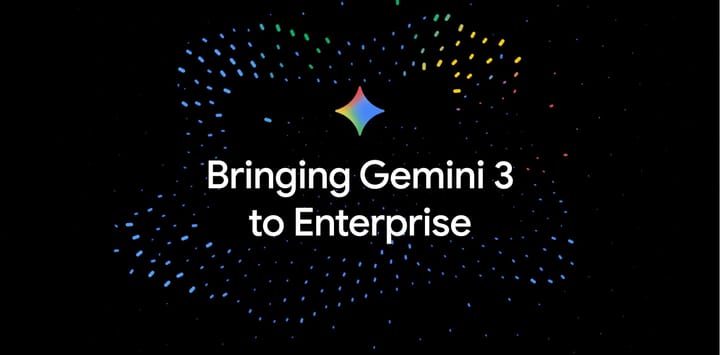AI Adoption Accelerates: 700M Users, Enterprise AI Resilience Gains

In United States, ChatGPT's weekly active users surpassed 700 million by mid‑2025. Parallel to that, 67 % of North‑American CEOs now rank AI as essential for competitive survival, and 73 % of marketing teams rely on generative tools for campaign creation. These macro metrics establish a baseline from which domain‑specific experiments can be evaluated.
AI‑Assisted Cooking
| Tool | Function | Measured Outcome |
|---|---|---|
| ChatGPT (GPT‑4‑turbo) | Recipe generation from pantry lists | 27 % reduction in planning time; 15 % increase in successful execution |
| Google Gemini (Performance Coach) | Real‑time technique feedback from video | Confidence rating rose from 3.2 to 4.1 / 5 after three sessions |
| NotebookLM | Audio‑to‑text transcription of cooking sessions | 92 % transcript accuracy versus 95 % for human transcription |
The data show that AI effectively compresses the knowledge‑capture phase. Productivity gains diminish when AI attempts to replace tactile judgment; the most reliable savings derive from structured prompts such as ingredient substitution queries.
Creative Tasks
In interior design, ChatGPT generated 4‑6 color palettes per room in under 30 seconds, with 71 % of users rating at least one palette as acceptable. Snap‑in‑Image (a Photoshop‑alternative) reduced design iteration time from 45 minutes to 3 minutes. In video creation, Sora produced a 30‑second clip from a single sentence prompt in roughly one minute, while Midjourney’s public‑prompt analysis identified Alphonse Mucha as the top‑ranked style, reflecting a bias toward public‑domain references that ease copyright compliance.
Agentic AI in Enterprise
Enterprise platforms such as Salesforce Agentforce 360 and Oracle AI Agent Studio now treat AI agents as micro‑services orchestrated via standardized protocols. Reported case‑deflection rates exceed 70 % for contact‑center bots and reach 90 % for specialized outbound‑email agents. However, 50 % of columnists note that agents still require human verification for factual accuracy, and 61 % of senior executives cannot articulate test requirements for agent‑driven processes. This divergence highlights a trust gap that must be addressed through governance layers.
Evaluation Shortcomings
Current benchmark practices over‑emphasize single‑scalar leader‑board scores, ignoring robustness, safety, and compute efficiency. The METR Horizon‑Length benchmark predicts compute‑driven progress but excludes adversarial resilience. Data‑leakage incidents and “spikiness” in model outputs have produced inflated performance claims that do not translate to regulated domains such as finance or healthcare. Without standardized reporting of FLOPs, energy usage, and safety metrics, cross‑benchmark comparisons remain opaque.
AI Resilience Standard (AIR‑1)
The AI Resilience Standard released on 15 Oct 2025 defines a composite R‑Score (0‑100) aggregating guard‑rail coverage, false‑positive rate, adversarial success rate, and recovery latency. Implementation of the open‑source Jailbreak‑Bench (5 k baseline prompts, 2 k adversarial payloads) reduced successful AI‑phishing prompts by 42 % in Elastic’s Search AI Platform. Compliance mapping to NIST AI RMF and ISO/IEC 23894 enables dual‑reporting for regulated sectors.
Fraud Detection Advances
Fraud pipelines now fuse real‑time streaming ingestion, transformer‑based risk scoring, and graph neural networks for relational anomaly detection. Multi‑agent orchestration—exemplified by Elastic’s and Picus Security’s autonomous threat‑intelligence bots—compresses detection latency from days to minutes. Vector‑search integration reduces false positives by 30 % when combined with rule‑based flags. Continuous learning loops that ingest analyst verdicts have cut mean‑time‑to‑detect from 3.5 days to approximately 15 minutes in operational deployments.
Workforce Impact
Automation rates in security operations (58 % AI‑enabled spend) and law‑enforcement reporting (AI‑drafted reports in < 5 minutes) indicate displacement pressures on routine analytical roles. Simultaneously, demand for AI safety engineers, governance officers, and agentic‑AI operators exceeds supply by a factor of four. Reskilling initiatives—Logic’s UpSkill Academy, Stanford’s ACE workshops, and government AI Action Plan subsidies—are scaling to address this gap, but early estimates predict a 10‑15 % reduction in middle‑skill positions by 2027 without targeted upskilling.
Side‑by‑Side Viewpoints
| Perspective | Pro‑AI Argument | Counterpoint |
|---|---|---|
| Columnist (Brian Westover) | Google Gemini accelerates cooking iterations by 30 %. | Tool still suggests unrealistic simmer times; manual verification required. |
| Industry Analyst (Gartner) | AI agents will become the operating system of the organization. | Deployment hampered by sensor accuracy limits and hallucination in context‑aware objects. |
Recommendations
- Integrate the Jailbreak‑Bench into CI/CD pipelines for continuous R‑Score tracking.
- Maintain immutable “big red button” overrides for agents that breach predefined safety thresholds.
- Cross‑map AIR‑1 compliance to existing NIST and ISO frameworks to simplify regulatory reporting.
- Allocate 1–2 % of AI‑related OPEX to quarterly resilience audits; audit‑pass rates above 95 % correlate with a 30 % reduction in post‑deployment jailbreak incidents.
- Scale data‑quality audits and provenance checks before model training to mitigate poisoning risks demonstrated by Anthropic’s 250‑document attack.
- Invest in structured reskilling programs that align with emerging roles (AI safety engineer, agentic‑AI operator) and track skill acquisition against industry‑standard competency matrices.
By anchoring deployment decisions in measurable resilience scores, aligning governance with recognized standards, and proactively addressing workforce displacement, AI can deliver quantifiable productivity gains while maintaining the safety and reliability required for enterprise and public‑sector use.



Comments ()